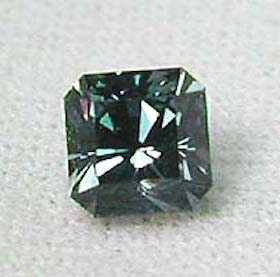The Gemstone Business: Stories and Observations
There are no shortcuts in the gemstone business. Learn why newcomers need to identify clear goals before investing in gems and training.
4 Minute Read
Real Questions Novices Have Asked Me About the Gemstone Business
I'll share a few examples with you. I'll also share the answers I'm usually too polite to give.
I'm very new to jewelry making and gem buying. Can I use the dichroscope on faceted stones to determine if they're real and/or different than advertised?
If you think the stones aren't as advertised, why did you buy them in the first place? Why did you do business with someone you obviously don't trust? That's not smart.
Most likely, the stones are indeed not as advertised. The dichroscope is just one of many tools you'll need to identify a gem. It can also help you orient a pleochroic stone before faceting. However, the dichroscope alone can't give you a definitive identification.
Is there a fairly inexpensive testing device to distinguish fake from real gemstones?
No, there's not. That's why there are very expensive instruments made specifically for gem identification. That's why there are entire programs and schools dedicated to this subject. If you could do this quickly and cheaply, these things wouldn't exist.
I'm a retired physicist. I'm sure I can learn to use gem identification instruments like a dichroscope and refractometer very easily, right?
Yes, learning to use both the dichroscope and refractometer is fairly simple. However, you'll need to learn to use more instruments. Even if you use both of these tools, you won't be able to positively identify a gem. Neither instrument will help you distinguish a lab-made from a natural gem (like a synthetic emerald from a mined emerald).
As for being a physicist? That means you have some science training, but you still know absolutely nothing about gemstones and the gemstone business.
If you have a technical background, don't assume it will make any difference in learning about gemstones, especially the business side.
I've been buying stones from eBay, India, Bangkok, shopping channel, etc. Would you like to buy them?
No offense, but why would I buy commercially cut stones from you or anyone like you? I'm actually in the gemstone business. I can buy directly from real wholesale suppliers at probably the cost (or below the cost) of what the people who sold those stones to you paid.
You paid retail for those gems. Maybe you believed some sales pitch that you could buy those loose stones and then sell them and make money. Believe me, it's not as easy as those vendors make it sound. Let me say it again. You paid retail.
Yes, if you have no conscience, you might be able to sell those stones to some customers out there. However, you won't be able to sell them to anyone in the gem trade. Furthermore, what you bought is most likely not as advertised. In other words, you'd better test the stones you bought and determine what you actually have.
I bought this stone from eBay, India, Bangkok, shopping channel, etc. Will you recut it?
So, you bought the stone for practically nothing, you're not even sure if it's a good stone, or even if it's real, and you want to pay me a little labor to make it pretty and valuable? If you want quality and beauty, buy quality and beauty in the first place. I have zero interest in making money for you at my expense and fixing junk you bought somewhere else.
This may sound harsh to some people, but think about it. Why would any quality faceter want to do this? Any quality cutter can very easily make more money cutting their own rough without dealing with the hassles and often unrealistic expectations of ill-informed customers who think they're going to make a killing on the deal.
There are No Free Rides
I could go on, but what I'm trying to say is, there are no free rides. No, you can't just get started in the gemstone business — with no knowledge, no training, and no investment — and expect to make money right away.
Of course, everyone has to start somewhere. You need to put in your time learning about gemstones before spending significant amounts of money buying them. That's just the way it is.
What are Your Real Goals?
So, before you decide to get into the gemstone business, ask yourself: what do you want to do? Until you figure out your real ambitions and know your goals, you can't make a plan to attain them. If you don't know your goals, you're wasting your time.
Once you know what you want — whether that's just buying quality stones for personal jewelry, or training to facet stones for a hobby, or trying to make a living cutting stones — you can get the appropriate knowledge, training, and help you'll need to accomplish your goals.
Jeff R. Graham
The late Jeff Graham was a prolific faceter, creator of many original faceting designs, and the author of several highly-regarded instructional faceting books such as Gram Faceting Designs.
Related Articles
Milling Platinum Sterling (A New Alloy)
Should I Use Oxide Polish or Diamond for Polishing Gems?
Siberite Tourmaline Material
Gemray or GemrayX Head Shadow
Latest Articles
Identifying Synthetic Gems
Ten Big, Beautiful, and Affordable Engagement Ring Stones
Rhodochrosite Value, Price, and Jewelry Information
Ruby and Sapphire Survey: Where Do You Draw the Line?
Never Stop Learning
When you join the IGS community, you get trusted diamond & gemstone information when you need it.
Get Gemology Insights
Get started with the International Gem Society’s free guide to gemstone identification. Join our weekly newsletter & get a free copy of the Gem ID Checklist!
